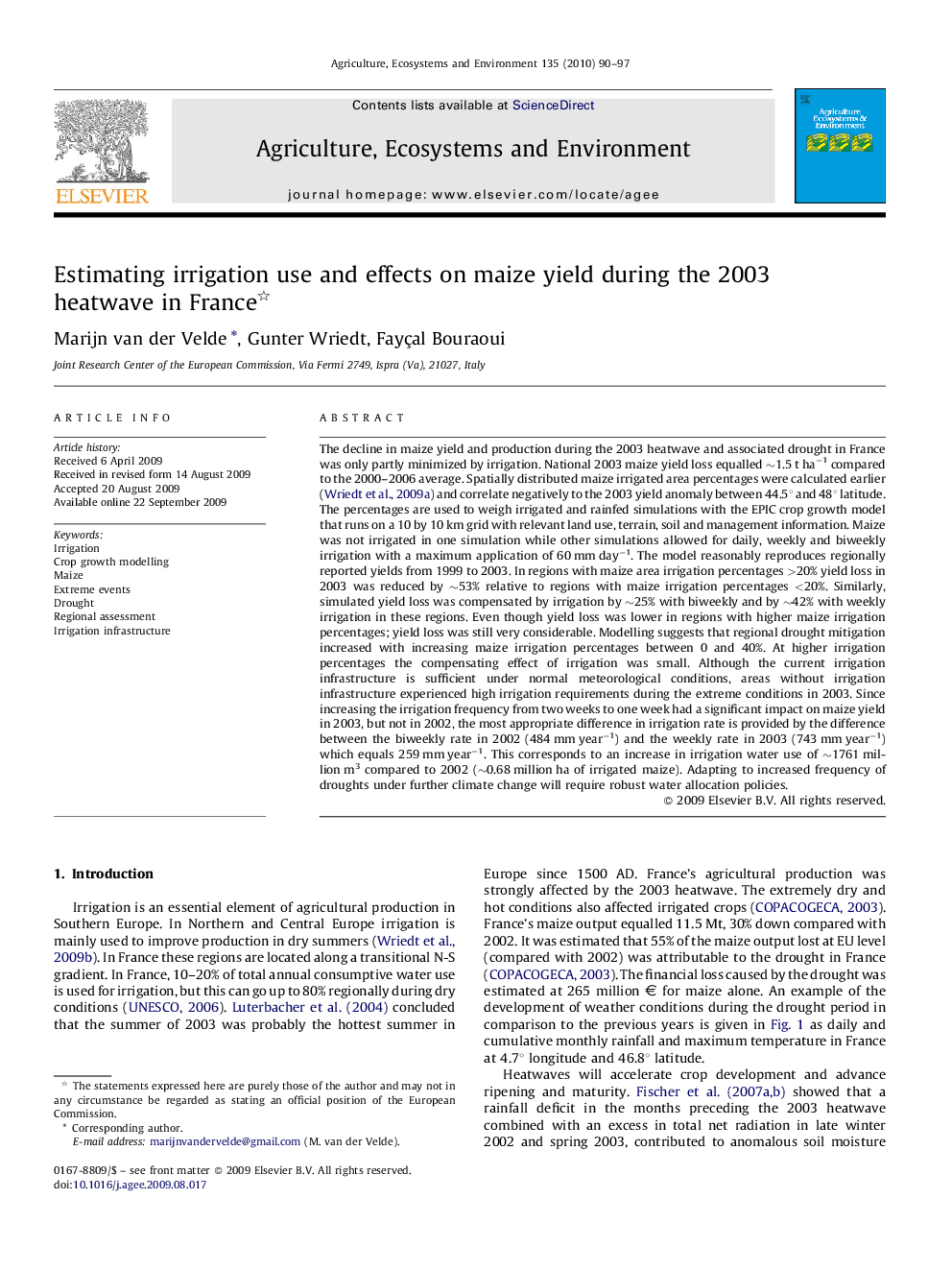| کد مقاله | کد نشریه | سال انتشار | مقاله انگلیسی | نسخه تمام متن |
|---|---|---|---|---|
| 2415168 | 1552119 | 2010 | 8 صفحه PDF | دانلود رایگان |

The decline in maize yield and production during the 2003 heatwave and associated drought in France was only partly minimized by irrigation. National 2003 maize yield loss equalled ∼1.5 t ha−1 compared to the 2000–2006 average. Spatially distributed maize irrigated area percentages were calculated earlier (Wriedt et al., 2009a) and correlate negatively to the 2003 yield anomaly between 44.5° and 48° latitude. The percentages are used to weigh irrigated and rainfed simulations with the EPIC crop growth model that runs on a 10 by 10 km grid with relevant land use, terrain, soil and management information. Maize was not irrigated in one simulation while other simulations allowed for daily, weekly and biweekly irrigation with a maximum application of 60 mm day−1. The model reasonably reproduces regionally reported yields from 1999 to 2003. In regions with maize area irrigation percentages >20% yield loss in 2003 was reduced by ∼53% relative to regions with maize irrigation percentages <20%. Similarly, simulated yield loss was compensated by irrigation by ∼25% with biweekly and by ∼42% with weekly irrigation in these regions. Even though yield loss was lower in regions with higher maize irrigation percentages; yield loss was still very considerable. Modelling suggests that regional drought mitigation increased with increasing maize irrigation percentages between 0 and 40%. At higher irrigation percentages the compensating effect of irrigation was small. Although the current irrigation infrastructure is sufficient under normal meteorological conditions, areas without irrigation infrastructure experienced high irrigation requirements during the extreme conditions in 2003. Since increasing the irrigation frequency from two weeks to one week had a significant impact on maize yield in 2003, but not in 2002, the most appropriate difference in irrigation rate is provided by the difference between the biweekly rate in 2002 (484 mm year−1) and the weekly rate in 2003 (743 mm year−1) which equals 259 mm year−1. This corresponds to an increase in irrigation water use of ∼1761 million m3 compared to 2002 (∼0.68 million ha of irrigated maize). Adapting to increased frequency of droughts under further climate change will require robust water allocation policies.
Journal: Agriculture, Ecosystems & Environment - Volume 135, Issues 1–2, 1 January 2010, Pages 90–97